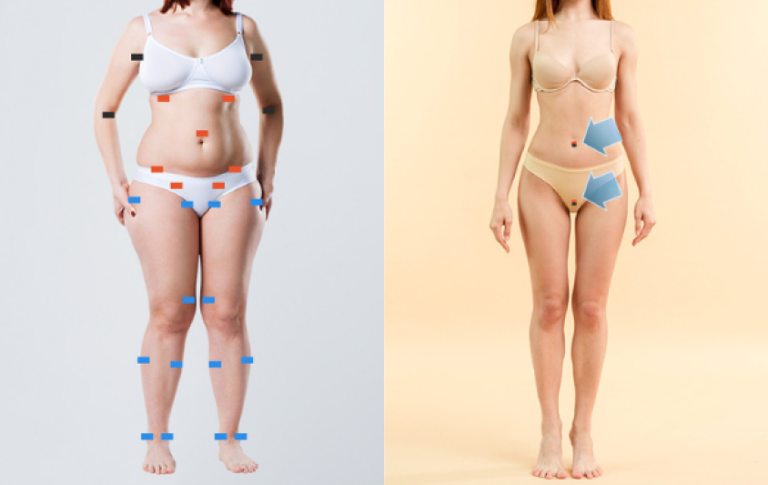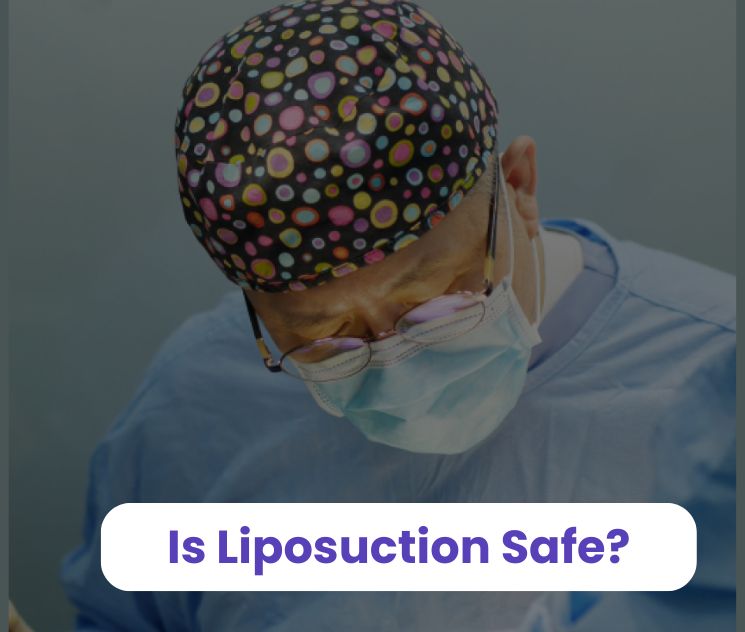Liposuction has become one of the most popular cosmetic procedures worldwide, offering patients a chance to contour their bodies and remove stubborn fat. While it can yield successful results when performed correctly, there’s always a risk that things might not go as planned.
Liposuction can sometimes go wrong, leading to issues like uneven contours, loose skin, or persistent discomfort. If this occurs, options like revision liposuction or skin tightening treatments may help address these concerns. However, the best way to achieve optimal results starts with careful preparation before the procedure. This includes selecting a highly skilled surgeon and following their pre-surgery instructions meticulously. Suppose you’ve experienced complications after liposuction or are looking to understand potential risks and how to minimize them. In that case, you’ve come to the right place.
In this article, we’ll explore common signs of bad, i.e. botched liposuction work, the reasons behind these issues, and most importantly, how to fix them. With over 20 years of experience and having transformed the bodies of more than 20,000 patients worldwide under the leadership of Dr. Abraham An at Lydian Clinic, we’ll use our expertise to help you navigate this challenging situation and regain confidence in your appearance. Keep reading to learn more.
Contents
What Is Liposuction and Does It Fail?
Liposuction is a cosmetic procedure that removes excess and stubborn fat deposits from specific areas of the body through a suction technique, helping to contour and reshape the figure. The final results of successful liposuction include a more sculpted body that meets the patient’s goals and expectations with a smoother, more defined silhouette. These results are long-lasting as long as the patient maintains a healthy lifestyle, including regular exercise and a balanced diet.
Liposuction can sometimes yield unsatisfactory results due to several factors. Common reasons for failure include uneven fat removal, which can lead to contour irregularities or an uneven distribution of fat, and skin sagging when too much fat is removed. Poor healing due to inadequate aftercare or infection can also contribute to suboptimal outcomes.
Additionally, suppose the liposuction result does not align with the patient’s body goals or expectations. In that case, liposuction can be perceived as a failure.
Dr. Abraham An says your first liposuction is very important. It can affect your body and confidence for a long time, so it’s important to get it done right.
He warns not to choose a clinic just because it’s cheap. Your body is precious, and you should trust it to an experienced and skilled doctor. A low price might seem like a good deal, but it can lead to poor results and regret.
Also, don’t hide the surgery from your family or rush into it just because you’re focused on cost. Talk to people you trust and think it through carefully.
There are many clinics out there, but not all are safe or trustworthy. Make sure you go to a good, reliable doctor who cares about your health and results.
What Are the Signs of Bad Liposuction Work?
Wondering about the signs of botched liposuction results? Several indicators may suggest the procedure didn’t go as expected. Abnormal symptoms such as uneven contours, persistent pain, or numbness could all point to potential flaws with the surgery.
Below are the 9 warning signs of bad liposuction results:
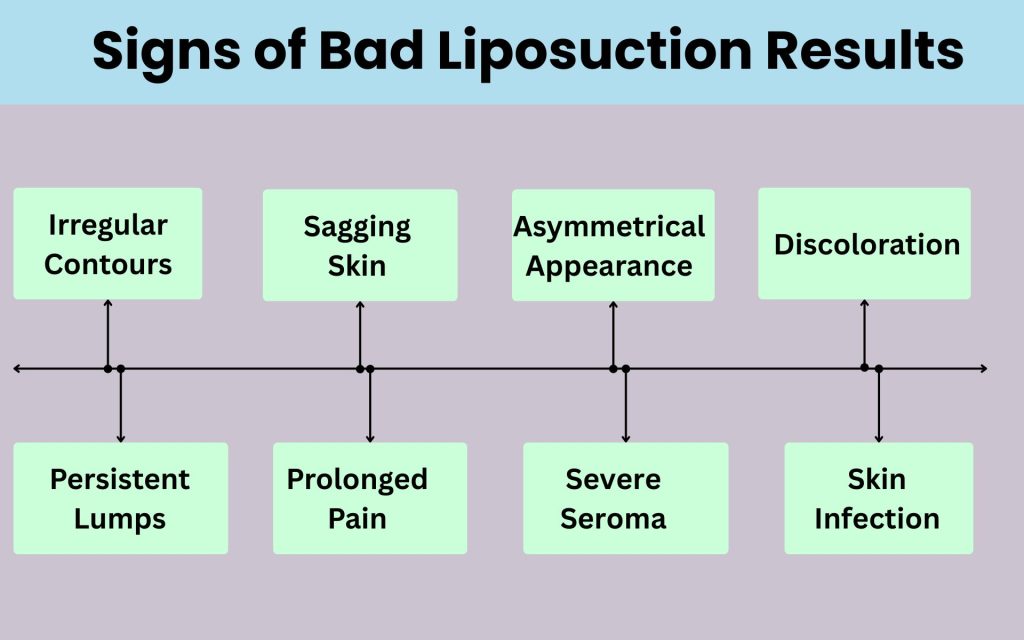
1. Irregular Contours
Irregular contours after liposuction are a clear sign of poor technique or uneven fat removal. This occurs when the fat is not removed evenly, leaving some areas too thin. At the same time, others remain too full, resulting in visible lumps, bumps, or dips along the treated area. It can also happen if the surgeon doesn’t properly account for the body’s natural curves or fails to smooth out the area during the procedure.
These uneven contours can make the treated area look unnatural and uneven, detracting from the overall aesthetic result. Correcting irregular contours may require revision surgery to refine the shape and restore balance.
2. Loose and Sagging Skin
Loose and sagging skin after liposuction is another sign that a procedure may have been poorly executed or that the body’s skin didn’t respond well to the changes in volume. This typically happens when too much fat is removed, or the skin is not able to tighten and retract properly afterward.
In some cases, older skin or skin with less elasticity may struggle to bounce back, leading to sagging or folds. Suppose the liposuction is not done with careful consideration of the skin’s ability to shrink and adjust. In that case, it can result in an unattractive, loose appearance. This issue can be challenging to correct and may require additional procedures like skin tightening or lifts to achieve a smoother, more toned result.
3. Asymmetrical Appearance
Asymmetry, such as one hip or thigh appearing noticeably different from the other, is a clear sign of poor liposuction results. It typically occurs when a surgeon lacks the precision needed or fails to account for your body’s natural proportions, leading to uneven fat removal.
This imbalance can create an unflattering, unnatural appearance that’s hard to camouflage, emphasizing the importance of selecting a skilled surgeon who understands the complexities of body contouring and can ensure a harmonious, balanced result.
4. Discoloration
Discoloration after liposuction, such as bruising, dark spots, or uneven skin tone, can be a common side effect. However, persistent or severe discoloration may indicate problems with the procedure or healing process. If bruising doesn’t fade over time or if areas of the skin turn an unusual color, it could be a sign of poor blood circulation, trauma to the skin, or infection.
In some cases, improper technique during liposuction can cause damage to blood vessels, leading to prolonged discoloration. Additionally, excessive swelling or poor aftercare can exacerbate uneven pigmentation. Persistent discoloration can negatively impact the aesthetic outcome, leaving the skin looking patchy, uneven, or unattractive.
5. Persistent Lumps and Bumps
Persistent lumps and bumps after liposuction often indicate that the procedure was not performed correctly. These irregularities can arise when fat is unevenly removed or if the healing process is disrupted, leading to fat settling in uneven pockets beneath the skin.
Dr Abraham An explains that an inexperienced surgeon may struggle to control the cannula, causing it to move incorrectly and apply uneven pressure, which can result in future lumps and bumps. Additionally, improper vibration of the cannula or suctioning fat too close to the skin, rather than from deeper layers, can contribute to these irregularities.
In some cases, fibrosis (the formation of scar tissue) or the accumulation of fluid can contribute to these lumps. Although some lumps may resolve over time as swelling subsides, persistent bumps can indicate poor technique or complications such as seromas or uneven contouring. These imperfections can significantly affect the final results, leaving the treated area looking uneven, lumpy, and unnatural.
6. Prolonged Pain and Numbness
Prolonged pain and numbness after liposuction can be a concerning issue. While some discomfort and temporary numbness are common in the immediate aftermath due to swelling and the healing process, persistent pain or loss of sensation may signal complications. This can occur if nerve damage happens during the procedure, leading to ongoing numbness, or if the body’s healing process is slower than expected.
In some cases, scar tissue formation can irritate nerves, resulting in chronic pain. It’s crucial to monitor these symptoms and consult with your surgeon if they persist, as prolonged discomfort or numbness can impact both physical recovery and aesthetic outcomes.
7. Severe Seroma
A severe seroma is a red flag that liposuction may not have gone as planned. It occurs when fluid builds up beneath the skin, often because the body’s lymphatic system cannot properly drain the excess fluid from the surgical site. This leads to a swollen, fluid-filled pocket that can cause significant discomfort, delayed healing, and sometimes infection.
While small seromas can resolve on their own, severe cases may require medical intervention, such as drainage. If left untreated, a severe seroma can result in uneven contours, persistent swelling, and a compromised aesthetic outcome, all signs that the liposuction procedure may have been poorly executed.
8. Skin Infection or Necrosis
Skin infection or necrosis is a serious and alarming sign that liposuction may have gone wrong. Infection can develop if proper hygiene and aftercare are not followed or if bacteria enter through the surgical incisions, leading to redness, warmth, pus, and fever.
Necrosis, on the other hand, occurs when blood flow to the skin is compromised, often due to excessive trauma during the procedure or poor surgical technique. This lack of blood supply causes the skin tissue to die, resulting in blackened or discolored areas that may require surgical removal.
Both conditions can significantly delay healing, cause permanent damage to the skin, and severely impact the final aesthetic outcome, highlighting the importance of choosing an experienced surgeon and following proper aftercare.
9. Excessive Scarring
Excessive scarring is a concerning sign that liposuction may not have been performed correctly. While some scarring is inevitable after any surgical procedure, overly large, raised, or discolored scars suggest that the healing process was compromised. This can happen if the surgeon’s technique is too aggressive, causing unnecessary tissue trauma, or if the body reacts poorly to the incisions made during the procedure.
In some cases, improper aftercare, such as not keeping the area clean or not following post-op instructions, can contribute to excessive scarring. These noticeable scars can detract from the overall results, leaving the treated area looking less smooth or uneven and potentially causing long-term aesthetic concerns.
Note: Keep track of your recovery process and note any abnormalities. If you experience extreme swelling or unusual lumps or notice signs of infection (such as fever or drainage), contact your surgeon immediately.
Don’t ignore persistent pain or asymmetry, as these could be indicators that your liposuction was not successful.
If you’re worried about your results, you can book a free consultation with us. We’re one of the top liposuction treatment providers in Korea and are always here to help and support you.
Why Does Liposuction Go Wrong?
Now that you’re aware of the signs of a botched liposuction, you might be wondering what causes these undesirable outcomes.
Let’s dive into some of the most common reasons why liposuction can go wrong and lead to disappointing results.
1. Inexperienced Surgeons: Liposuction can go wrong if the surgeon is inexperienced. They may remove fat unevenly, causing lumps, bumps, or asymmetry. Poor technique can also lead to complications like excessive scarring, fluid buildup, or skin damage.
An inexperienced surgeon might not understand how to balance the body’s natural shape or handle problems that arise, which can result in unsatisfactory results. Choosing skilled and experienced liposuction surgeon is crucial for a safe and successful procedure.
2. Over-Aggressive Fat Removal: Over-aggressive fat removal happens when too much fat is taken out during liposuction. This can lead to uneven contours, skin sagging, or even damage to the underlying tissue.
When fat is removed too aggressively, the skin may not be able to shrink back properly, causing loose or uneven skin. It can also increase the risk of complications like skin necrosis or irregular healing. To avoid these issues, it’s important for the surgeon to carefully assess and remove fat in a balanced and controlled manner.
3. Poor Patient Screening: Poor patient screening can lead to complications after liposuction. If a surgeon doesn’t properly assess a patient’s health, medical history, or skin condition, it can result in poor outcomes. For example, patients with certain health conditions, like diabetes or poor circulation, may face higher risks of infection or slow healing.
Additionally, if the surgeon doesn’t consider the patient’s skin elasticity or body shape, the results can be uneven or unsatisfactory. Proper screening helps ensure the patient is a good candidate for liposuction and can recover well, minimizing the chances of problems during or after the procedure.
4. Inadequate Aftercare: Inadequate aftercare can lead to serious complications after liposuction. Failing to follow post-surgery instructions, such as wearing compression garments, managing swelling, or keeping the area clean, can result in infection, uneven healing, or increased swelling.
Not properly caring for the treated area can also lead to complications like seromas (fluid buildup), excessive scarring, or even skin damage.
Aftercare is crucial for a smooth recovery and achieving the best possible results. Proper guidance and attention during the healing process are essential to avoid these issues.
5. Rushed Liposuction: Rushed liposuction procedures can lead to poor results and complications. When a surgeon is hurried, they may not take the time to remove fat evenly or assess the body’s natural shape properly. This can result in uneven contours, skin damage, or asymmetry.
Rushed procedures also increase the risk of complications like excessive scarring, infection, or fluid buildup. A surgeon needs to take their time, ensuring each step is done carefully to achieve balanced and smooth results.
6. Unrealistic Expectations: Unrealistic expectations can lead to disappointment after liposuction. Suppose a patient expects drastic changes or believes liposuction will completely transform their body. In that case, they may be dissatisfied with the results.
Liposuction is meant to contour and refine, not create dramatic weight loss or perfect symmetry. Having expectations that don’t match what the procedure can realistically achieve can cause frustration and may lead to the perception that the surgery went wrong, even if the results are technically successful.
Patients need to have a clear understanding of what liposuction can and cannot do and to discuss their goals openly with the surgeon.
How to Fix Botched Liposuction?
Now that you’re familiar with the signs of botched liposuction, you’re likely wondering what steps you can take to fix it. If you’re dealing with less-than-ideal results, don’t worry—there are ways to correct the situation and get back on track.
Here are some effective strategies to consider to fix botched liposuction results:
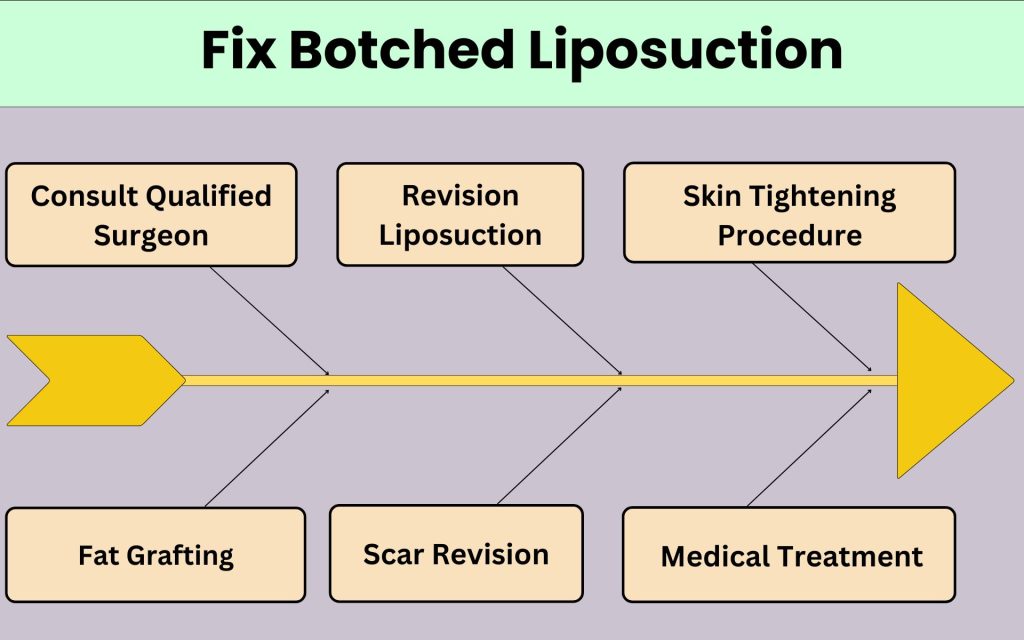
1. Consult a Board-Certified Cosmetic Surgeon
If you’ve had a botched liposuction procedure, consulting a board-certified cosmetic surgeon is the first step toward fixing the issues.
A qualified surgeon can assess the damage, identify problems like uneven contours, skin sagging, or irregular fat removal, and recommend corrective procedures. With their expertise, they can revise the results, whether through additional liposuction, skin tightening, or other surgical options, to restore a more balanced and natural appearance.
Board-certified surgeons have the experience and knowledge to handle complex revisions. They can help you achieve a smoother, more satisfactory result after a botched procedure.
2. Revision Liposuction
Revision liposuction is often the solution to fix botched liposuction. If your initial procedure resulted in uneven fat removal, asymmetry, or skin issues, a skilled, board-certified cosmetic surgeon can correct these problems.
Revision liposuction involves carefully refining the treated areas, removing any remaining irregularities, and potentially addressing skin laxity or contouring issues that may have occurred.
The surgeon will assess the flaws from the first procedure and work to create a smoother, more balanced result.
“Revision liposuction is not easy,” says Dr. Abraham An. “It’s expensive, takes a lot of energy from the surgeon, and not many doctors are truly skilled at it. That’s why so many people go through revision surgeries without seeing the results they hoped for.”
At Lydian, Dr. An and his team specialize in treating side effects from previous liposuction. Using advanced revision techniques and fat grafting, they work to restore smooth, even skin and natural body contours.
“If you’ve had a bad result, don’t lose hope,” says Dr. An. “With the right approach, we can help bring back confidence and comfort in your body.”
3. Skin Tightening Procedures
Skin tightening procedures can be an important part of fixing botched liposuction, especially if the initial surgery caused loose or sagging skin.
After fat removal, the skin may not shrink back as expected, leading to an uneven or flabby appearance. To address this, skin tightening treatments like radiofrequency, laser therapy, or even surgical options such as a tummy tuck or thigh lift can help. These procedures stimulate collagen production or remove excess skin, leading to a firmer, smoother appearance.
A skilled surgeon can assess the extent of skin laxity and recommend the appropriate skin tightening procedure to restore a more toned, natural look after a botched liposuction.
4. Fat Grafting
Fat grafting can be a useful option to fix botched liposuction, especially if the procedure results in uneven contours or areas with insufficient fat removal.
In fat grafting, fat is harvested from another part of the body, purified, and then carefully injected into the areas that need volume restoration or smoothing. This technique can help correct asymmetry, fill in depressions, or improve skin texture, providing a more balanced and natural result.
Fat grafting is often used in combination with revision liposuction or skin tightening to address multiple issues and achieve a smoother, more harmonious appearance after a botched procedure.
5. Scar Revision
Scar revision is a procedure used to improve or remove scars left from botched liposuction. If the original surgery caused large, uneven, or noticeable scars, scar revision can help make them less visible.
The surgeon may use methods like removing the scar tissue, using lasers to smooth the skin, or stitching the area differently to reduce the scar’s appearance. This procedure helps create a smoother, more natural-looking result.
If you’re unhappy with the scars after liposuction, scar revision can be a good option to improve the overall look.
6. Medical Treatment for Complications
If complications arise after liposuction, medical treatments are necessary to manage them. For example, suppose there is a severe infection or fluid buildup. In that case, doctors may need to drain the area or use antibiotics.
In cases of skin damage or necrosis, additional procedures might be required to remove dead tissue. Getting prompt care from a qualified doctor is crucial for preventing further issues and supporting proper healing.
Preventing Bad Liposuction Results: Tips for a Safe Procedure
When it comes to liposuction, taking preventative measures is far more effective than dealing with complications afterward. Here are essential considerations to help you avoid a botched liposuction:
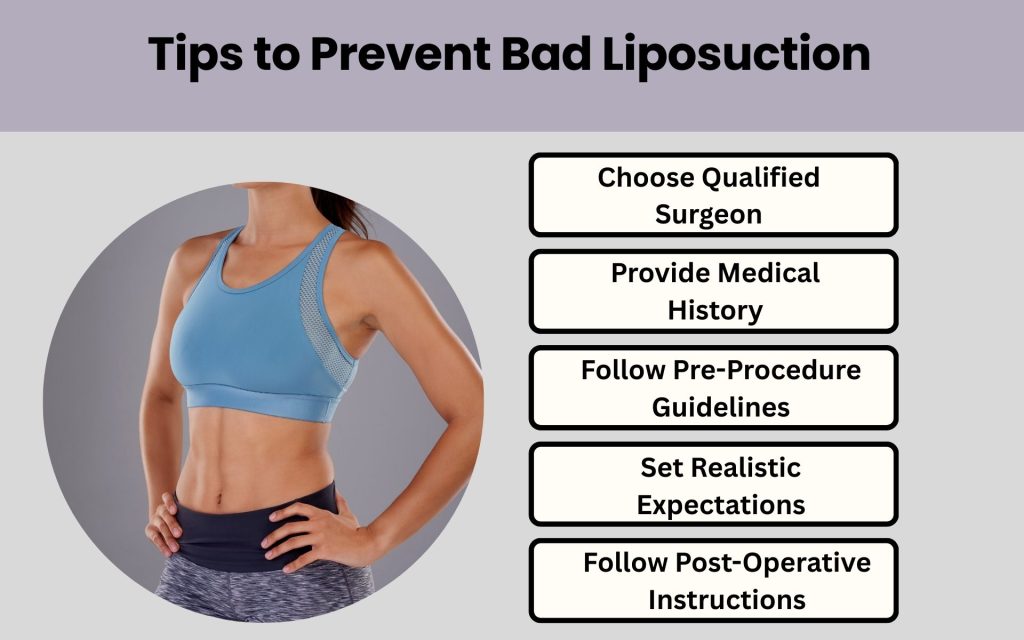
1. Choose a Qualified Surgeon
To prevent bad liposuction outcomes, always make sure to choose a board-certified surgeon with extensive experience in liposuction, even though they might be expensive by a certain percentage.
Review before-and-after photos and patient reviews, and ensure the surgeon listens to your concerns.
Confirm the surgery is done in an accredited facility and follow post-operative care instructions for safe healing and minimal complications.
2. Provide Medical History
Provide your surgeon with a full medical history, including pre-existing conditions, medications, surgeries, and allergies. This helps ensure a safe procedure, reduces complications, and allows the surgeon to tailor the surgery to your health needs.
3. Follow the Surgeon's Pre-Procedure Guidelines
Following the surgeon’s pre-procedure guidelines is key to a safe liposuction experience. This may include avoiding blood thinners, stopping smoking, and limiting alcohol to reduce risks.
You may also be asked to fast before surgery and arrange for transportation home, as you won’t be able to drive yourself. Adhering to these instructions helps ensure a smooth procedure and better healing.
4. Set Realistic Expectations
Setting realistic expectations is key to a successful liposuction experience. Liposuction is for body contouring, not weight loss, and results vary based on your body type.
Full results may take months to appear as swelling subsides. Discuss your goals with your surgeon to ensure they’re achievable and be prepared for minor imperfections during recovery. This helps prevent disappointment and ensures a positive outcome.
5. Follow Post-Operative Instructions
Following post-operative instructions is crucial for a safe recovery. Wear compression garments to reduce swelling, avoid strenuous activities, and take prescribed medications as directed.
Attend follow-up appointments to monitor healing and address concerns. Adhering to these guidelines ensures a smoother recovery and better results.
Ensure a Successful Liposuction Journey with Expert Care
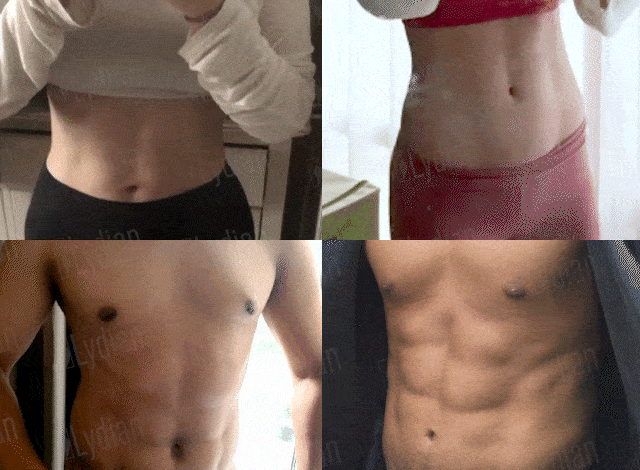
While liposuction can be a life-changing procedure that enhances your body contours, it’s important to recognize that, like any surgery, there are risks involved.
Identifying the signs of suboptimal results—such as uneven contours, sagging skin, or persistent pain—early on is crucial. If you experience any of these issues, seeking a consultation with a board-certified cosmetic surgeon is the best course of action.
Want Liposuction with Expert Care?
For those considering liposuction, we invite you to experience the excellence and expertise of Lydian Clinic. With over 20 years of experience, cutting-edge techniques, and a commitment to personalized care, Dr. Abraham An and his team offer world-class results.
Whether you’re exploring liposuction or looking to correct previous outcomes, we’re here to guide you through every step of the process.
Your dream body is closer than you think—let us help you make it a reality. Contact Lydian Clinic today for a consultation and take the first step toward a more confident, sculpted you.
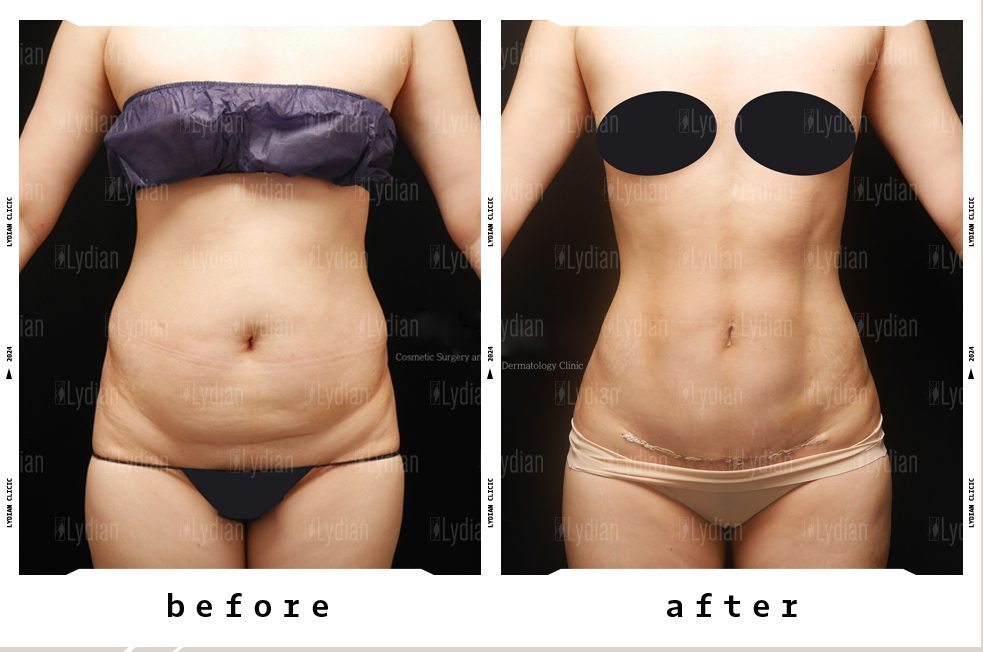


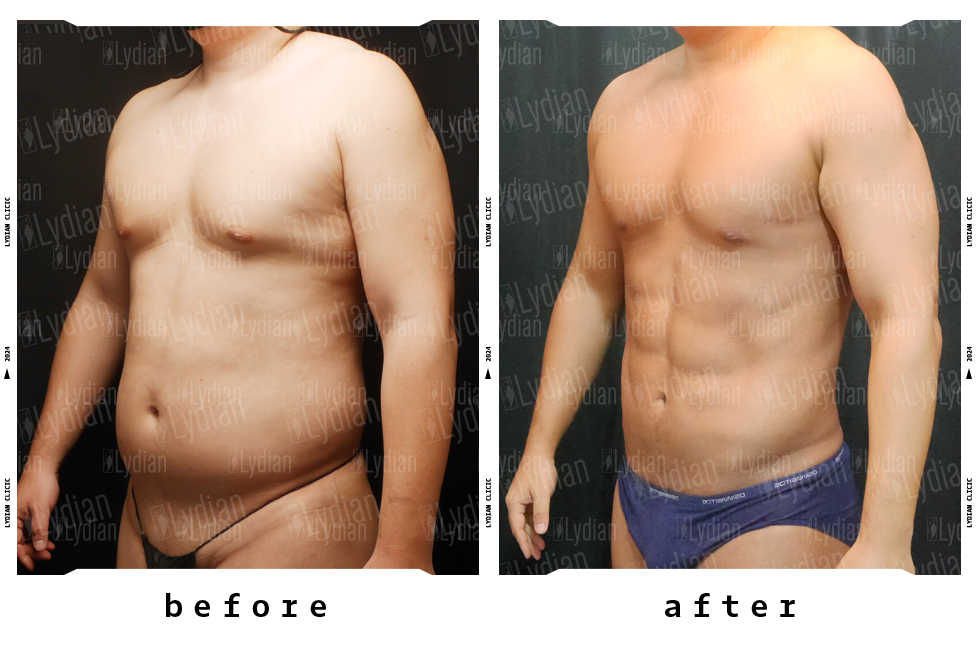










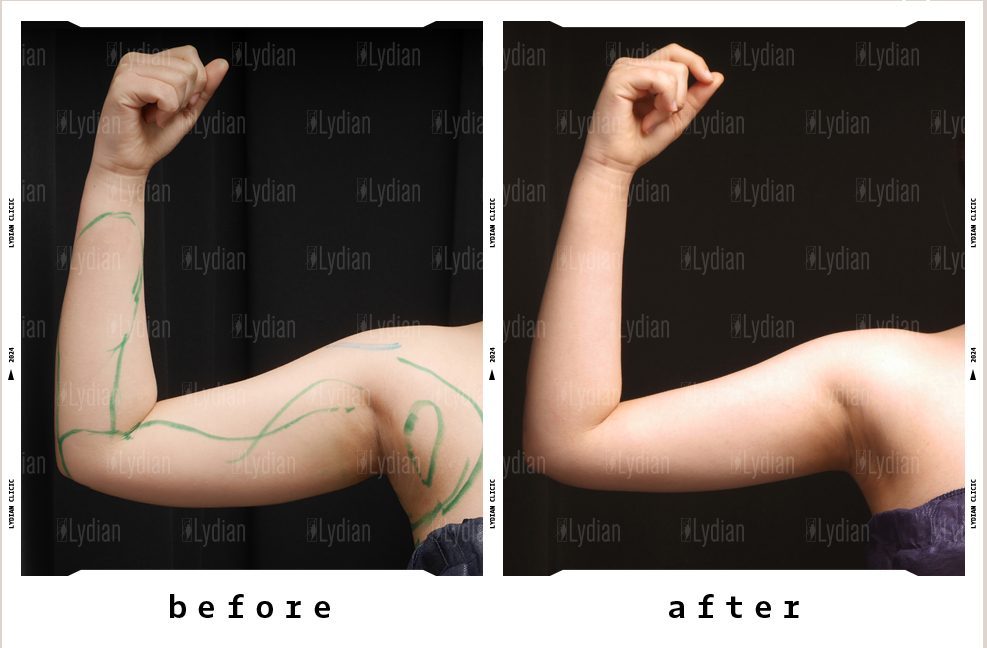
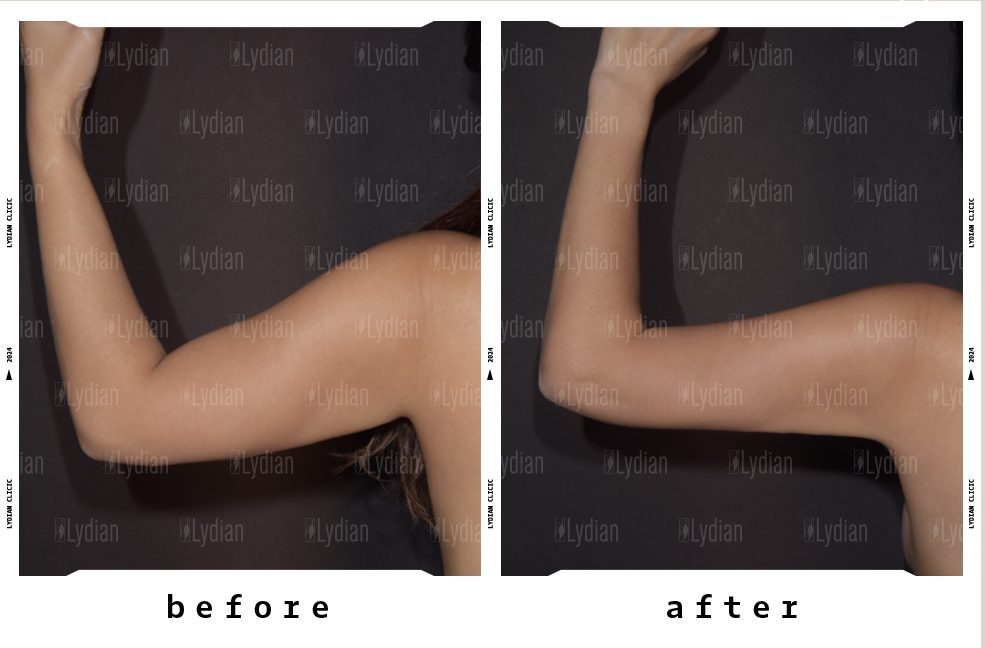
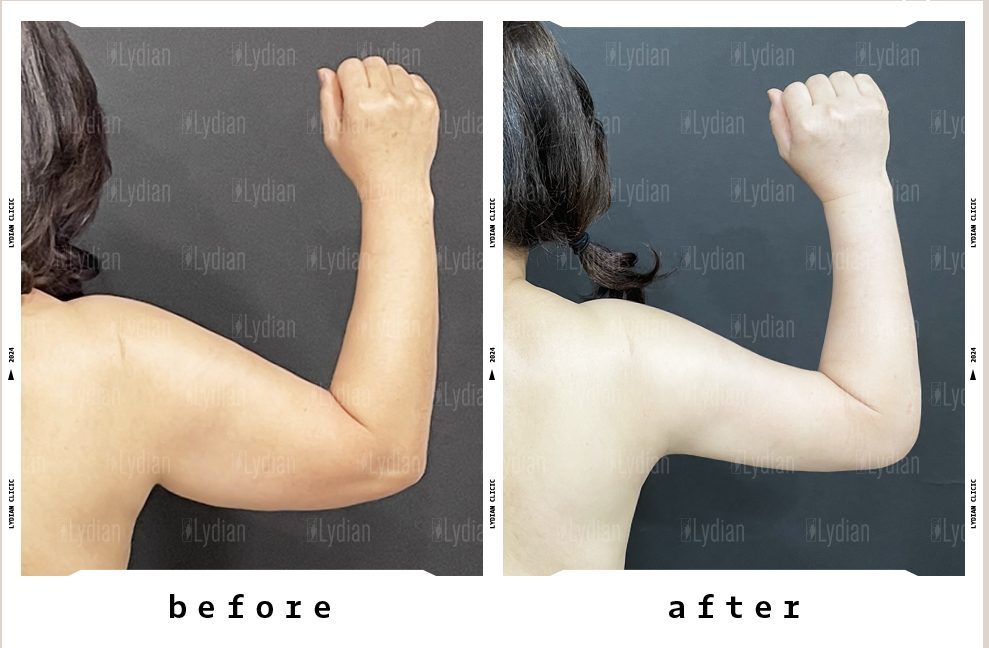

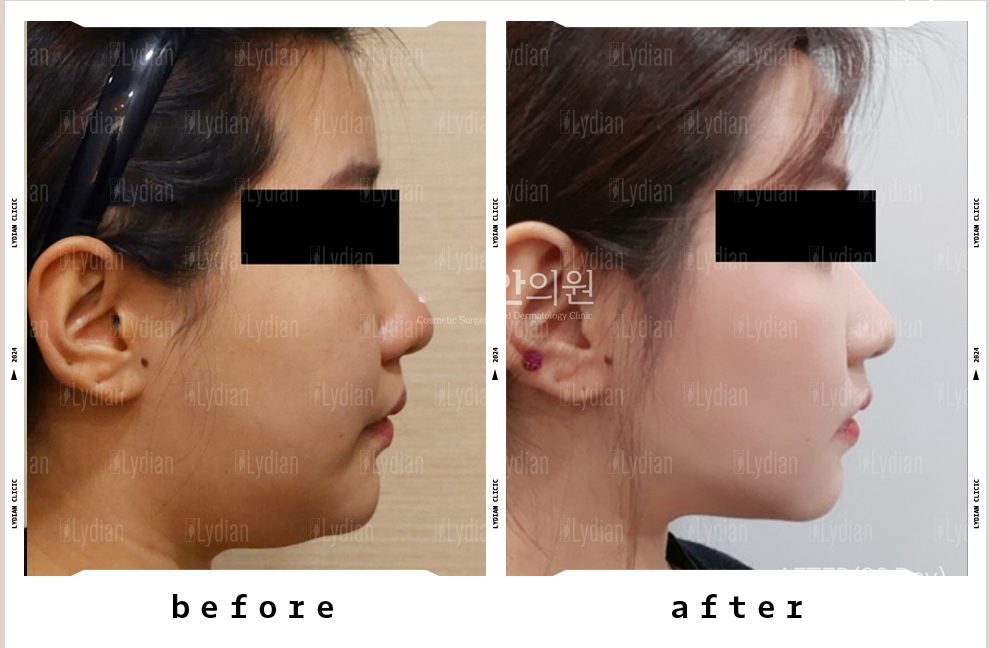

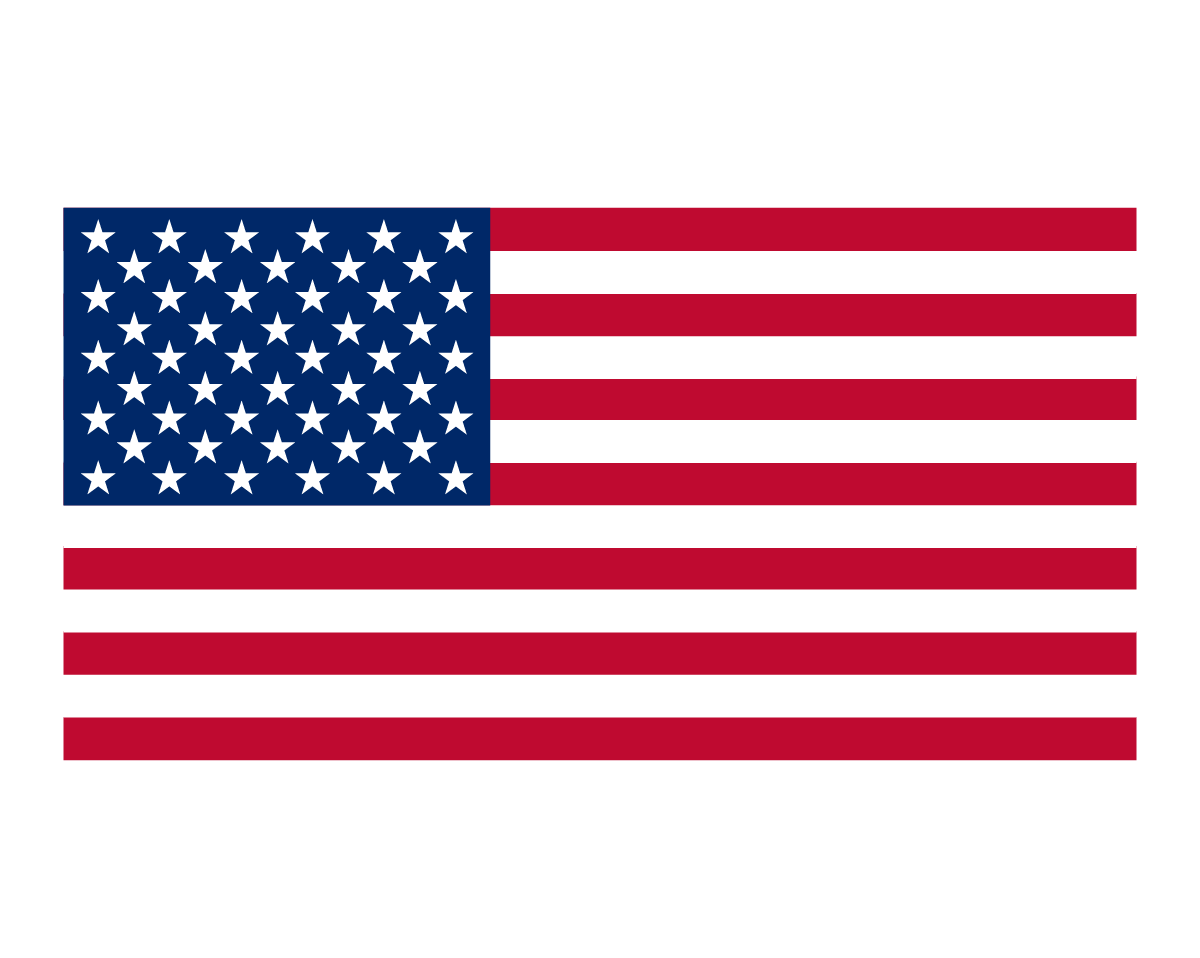 English
English 日本語
日本語 中文网站(繁体)
中文网站(繁体) Русский
Русский Bahasa Indonesia
Bahasa Indonesia ภาษาไทย
ภาษาไทย Tiếng Việt
Tiếng Việt 대한민국
대한민국

